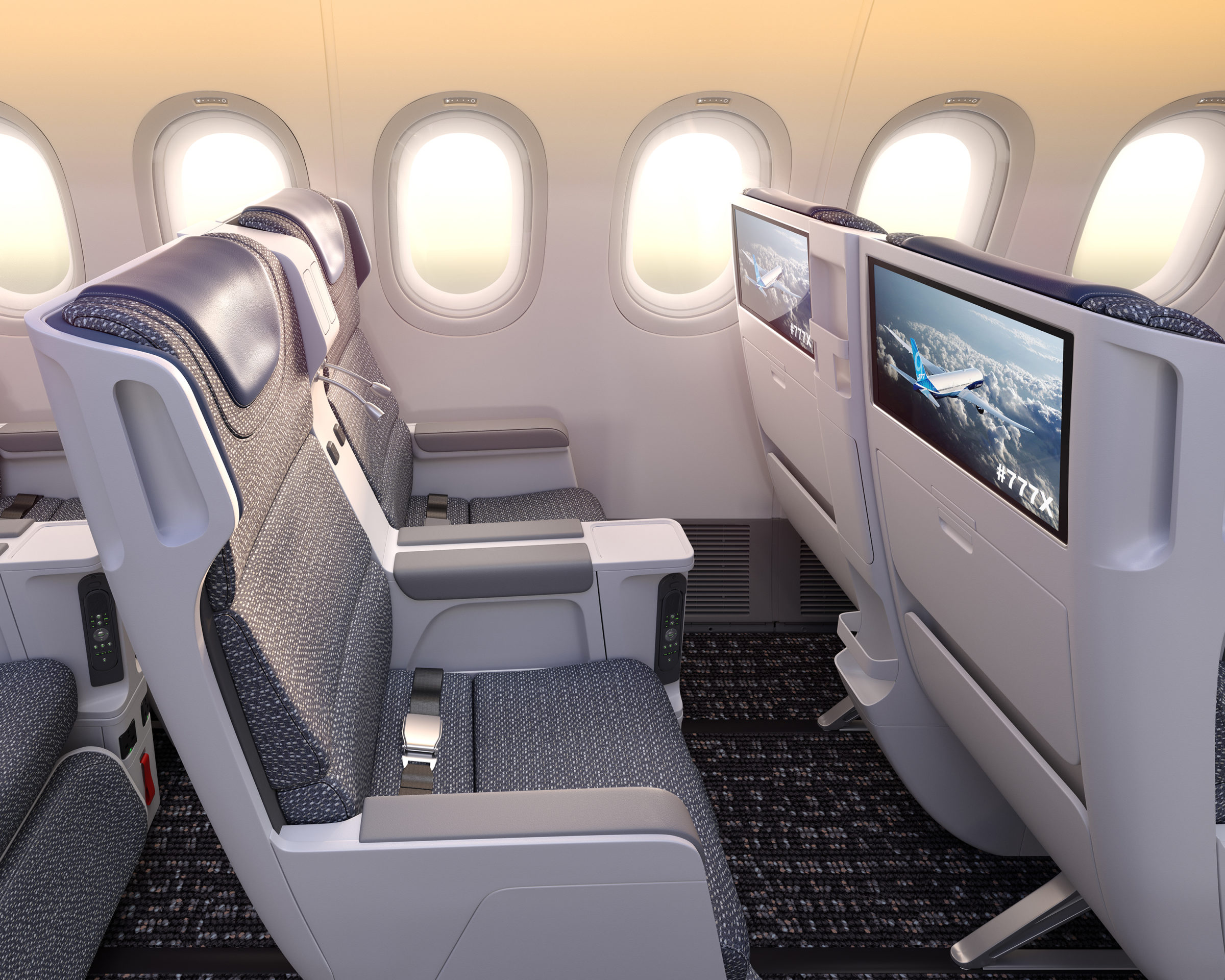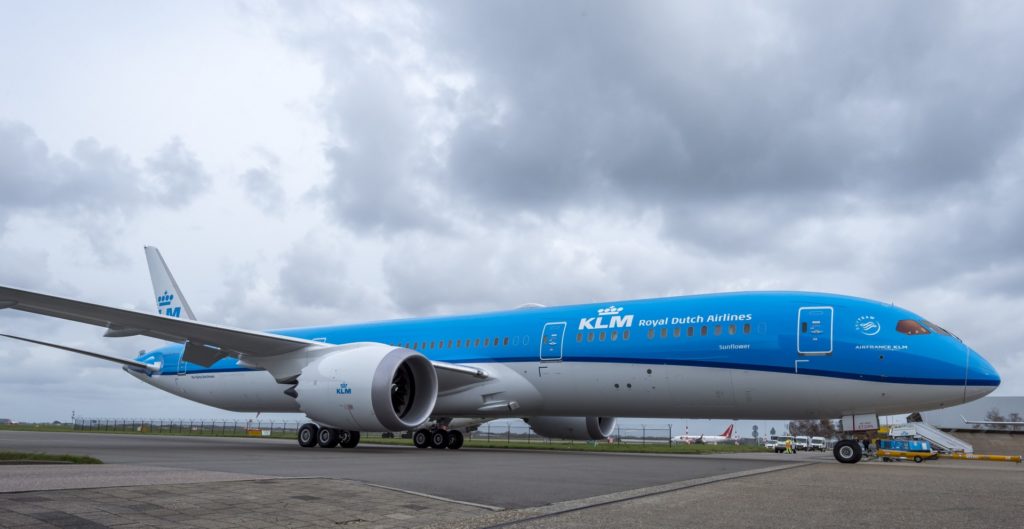Leeham News and Analysis
There's more to real news than a news release.
Better to bring capacity back with a 777X or 777-300ER? Part 2
By Bjorn Fehrm
Subscription Required
Introduction
May 7, 2020, © Leeham News: With the Covid-19 pandemic depressing passenger traffic for years to come, we started an analysis last week on the options the airlines have who wait for their Boeing 777-9. Hold on to their 777-300ER or upgrade to the newer and more efficient 777-9?
We deepen the analysis this week by comparing the economics of a 10 years old 777-300ER versus a new 777-9.
Summary:
- The 777X is best seen as a cross between a Boeing 787 and a 777-300ER. It inherits the passenger comfort features the 787 brought to the market like lower cabin altitude, higher cabin humidity, larger windows, and a smoother ride.
- If a 777-9, with it’s higher capital costs, can compete on operating cost with a used 777-300ER depends on the fuel price.
Collapse of Boeing-Embraer JV gives Mitsubishi Aircraft new opportunities
Subscription Required
By Scott Hamilton
Introduction
May 4, 2020, © Leeham News: The collapse of the Boeing-Embraer joint venture removes a major cloud over another Boeing agreement with a different airframe company.
Long ago, Boeing and Mitsubishi Aircraft Corp. (MITAC) entered into a support agreement for what was then the MRJ program.
MITAC was to receive marketing and services support from Boeing for the MRJ.
From the moment the news emerged that Embraer and Boeing were talking about a merger, acquisition or joint venture (the goal moved over time), questions arose over the future of the MITAC agreement.
Summary
- Boeing said the MITAC agreement would be honored, but skepticism remained.
- The MRJ and later the SpaceJet would compete with the former Embraer product line.
- Recovery consensus 3-5 years.
- With collapse of Boeing-Embraer JV, Mitsubishi-Boeing can reaffirm, strengthen their cooperative agreement.
Better to bring capacity back with a 777X or 777-300ER
Subscription Required
By Vincent Valery
Introduction
April 30, 2020, © Leeham News: The travel restrictions implemented in the aftermath of the COVID-19 outbreak lead to an unprecedented collapse in global passenger traffic.
These travel restrictions should remain in place until a COVID-19 vaccine becomes available for the wider population. Combined with the economic effects of the various social distancing measures, travel demand will remain depressed for a substantial period. Leeham Co. predicts that it will take four to eight years before traffic returns to 2019 levels.
Airlines grounded a large number of aircraft due to the collapse in passenger demand. As a result, there will be plenty of aircraft in long-term storage available for lease or purchase at discounted prices once demand recovers.
These aircraft will compete against those coming off the assembly line. The 777-9 is planned to enter service in 2021 at the earliest. Apart from Lufthansa, all the airlines that ordered the 777X are 777-300ER operators. Once traffic bounces back, they will have to ponder whether they are better off keeping (or sourcing) older 777-300ERs or take deliveries of 777-9s as scheduled.
In this article series, we will compare the economics of the 777-300ER with the 777-9 on the world’s busiest intercontinental route.
Summary
- Depressed demand brings airlines to the brink;
- Near-terminal wounds to heal once demand recovers;
- A perfect storm for new (large and expensive) aircraft;
- Peculiarities of operating on the busiest intercontinental route.
Can a passenger airliner run as a freighter with today’s tariffs? Part 4.
By Bjorn Fehrm
Subscription Required
Introduction
April 23, 2020, © Leeham News: We spent the last weeks checking if passenger airliners used as belly freighters make economic sense.
With the present air freight prices, it does. The high freight prices are a result of half the World’s freight capacity disappearing with the grounding of passenger jets.
Our economic analysis assumed standard densities for the belly cargo. What happens if this is no longer the case? Can more voluminous cargo fly in the passenger cabin?

Figure 1. Air Canada Boeing 777 with humanitarian supplies (face masks) transported in the cabin. Source: Air Canada.
Summary:
- Widebody aircraft can temporarily fly as belly freighters without loading cargo in the cabin, but enabling cabin cargo will improve the business case with the present lower-density cargo.
- For single-aisle jets the belly cargo holds are too small, a cabin cargo loading system is necessary for efficient operation.
- Is it OK to take out the seats and load cargo in the cabin? For normal cargo no, it isn’t. We check what is required.
Japan seeks to develop aircraft industry ties through Asian trade partnerships
By Judson Rollins
Subscription Required
April 20, 2020, © Leeham News: Japan has long been known as an engineering powerhouse, and Japanese manufacturing titans like Mitsubishi Heavy Industries and Kawasaki Aerospace have been a key part of Boeing and Airbus supply chains for the last two decades.
Japan’s government wants to expand the country’s influence by signing agreements with members of the Association of Southeast Asian Nations (ASEAN) to secure improved cooperation with downstream suppliers. Aircraft and engine OEMs and key tier-one suppliers already have manufacturing operations in Thailand, Singapore, Malaysia, Indonesia, the Philippines, and India.
The first of these agreements is expected to be signed with Malaysia, which declared its ambition to become the biggest aerospace producers in Southeast Asia by 2030.
On the sidelines of February’s Singapore Air Show, LNA met with representatives of Japan’s Ministry of Trade, Economy, and Industry (METI) to discuss the proposed agreement with Malaysia. This article has been withheld until now due to the myriad aerospace issues caused by the COVID-19 crisis.
Summary
- Bilateral agreement postponed due to COVID-19.
- Areas of cooperation include manufacturing, training and more.
- Malaysia’s growing aerospace footprint.
Can a passenger airliner run as a freighter with today’s tariffs? Part 3.
By Bjorn Fehrm
Subscription Required
Introduction
April 16, 2020, © Leeham News: In last week’s article we saw the present high air freight prices can support a belly-cargo operation with a passenger airliner when flying the hot routes from Asia to North American and Europe.
But the aircraft shall fly the return route as well, with as much belly cargo as possible. And last week’s freight prices are volatile. We dig deeper this week and look at the total equation with return flights, different levels of load factors, and price variations.
At what level is an operational belly freighter better than a grounded passenger jet?

Figure 1. American Airlines is increasing its belly cargo operation step by step since the launch on March 20. Source: American Airlines.
Summary:
- Last week we saw the belly cargo operation with passenger aircraft make sense in today’s market if we fly the prime routes, Asia to North America or Europe.
- When one includes the return trips the case is less clear cut. But it’s still sensible as long as aircraft and crews are sitting idle and can’t be used for other purposes.
Restarting credit markets
Subscription Required
By Vincent Valery
Introduction
April 13, 2020, © Leeham News: Companies across the globe moved quickly to draw down credit facilities or arrange new debt to get through the economic disasters brought on by COVID-19, the coronavirus.
The quick moves were not going to be enough as credit markets closed. Governments began stepping in with grants, loans and loan guarantees to companies. Small businesses continue to struggle and individuals thrown out of work wait for payments and extended benefits.
The Federal Reserve announced unprecedented measures to support credit markets, including in riskier asset classes. We will analyze those measures and assess their impact.
Summary
- The goals of unprecedented monetary stimulus;
- First measures for healthier companies;
- Expanded to riskier ones;
- Implications for the commercial aviation ecosystem.
Can a passenger airliner run as a freighter with today’s tariffs? Part 2.
By Bjorn Fehrm
Subscription Required
Introduction
April 9, 2020, © Leeham News: Monday, we started looking at using a passenger airliner as a freighter, now that passenger aircraft are grounded in many countries because of COVID-19 lockdowns.
We examined the main cargo routes and how much of the freight capacity that went missing when airliners didn’t bring along belly cargo when flying their schedules. We also looked at the volatile freight prices, on the up since the lower airliner hold capacity went missing.
Now we see if flying passenger aircraft as freighters makes sense outside emergency medical supply flights. Can you fly the plane as is, or do you need to take out seats or add seat freight bags to make it worthwhile?
Summary:
- The air freight prices have increased further since last week and fuel prices are at an all-time low.
- With the present fuel and freight prices, it makes sense to fly passenger airliners as belly freighters.
Shall passenger airliners run as freighters during the COVID-19 crisis?
By Bjorn Fehrm
Subscription Required
Introduction
April 6, 2020, © Leeham News: With the COVID-19 pandemic, the passenger traffic has ground to a halt in many countries. The airliners are parked and their crews sit idle.
At the same time, the air freight market booms. From a decline in demand in the first months of the year, there isn’t enough freighter capacity right now. The freight that traveled in the bellies of the passenger jets had to find new ways and as this was almost half the world’s air cargo, the dedicated freighters can’t absorb the volumes.
Is it time to fly passenger airliners as substitute freighters? Some airlines are doing this on a spot basis. Apart from injecting capacity for needed medical supply freight, does it make economic sense? We run a series of articles on the subject.

Figure 1. Delta flies an A350-900 as a belly freighter between Shanghai and Chicago three times a week from March 30. Source: Delta.
Summary:
- Freight prices soar as capacity collapses when airlines ground passenger jets.
- For the airlines, the cost equation changes with an abundance of free capacity at remaining fixed costs.
- Does it make economic sense to run passenger airliners as freighters in this situation?
Can the A321XLR fly trans-Oceanic routes, Part 2?
By Bjorn Fehrm
Subscription Required
Introduction
March 26, 2020, © Leeham News: We are checking if the Airbus A321XLR is usable for trans-Oceanic routes. It’s a credible trans-Atlantic aircraft, but can it be used effectively over the Pacific Ocean as well?
Last week we found a one-stop routing that worked. Now we compare the economics of flying the A321XLR on a one-stop route versus a longer-range aircraft like the Airbus A330-900 non-stop.
Summary:
- The A330-900 covers our US West Coast to Japan trip in almost half the time of our single-aisle route over Honolulu.
- Will it also have a lower per-seat cost? We find out using our airliner operating cost model.






